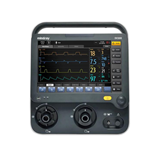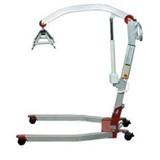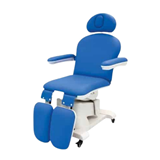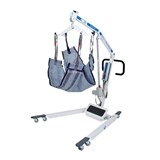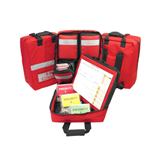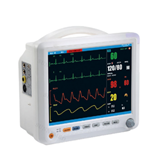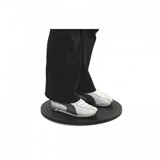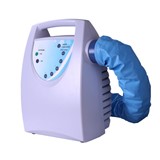Minister for Health Sussan Ley said the proposed legislation would ensure concession card holders received greater taxpayer support once their out-of-pocket medical costs hit $400 for the year, as opposed to $638 under the current system – a difference of $238.
Non-concessional families and singles will also significantly benefit, with their safety net thresholds falling from $2000 to $1000 and $700 respectively, while new online tools would make it easier for family members to combine their safety net payments so they are all counted as one.
Dependent children aged 16 to 25 who are temporarily unable to work or study due to illness will also receive reprieve, with this package allowing their medical costs to count towards their family’s Medicare Safety Net, rather than being considered as a single individual.
Ley said the Turnbull Government's proposed package also aimed to create a more transparent fee system that would allow patients to better understand their out-of-pocket costs and compare prices, while at the same time encouraging health providers to set more competitive prices.
"Like Medicare itself, the Medicare Safety Net is, at its core, about protecting our most vulnerable and ensuring they can afford to access essential health services," Ley said.
"Unfortunately constant chopping and changing over the past decade has seen the safety net become overly-complex for patients to understand and not always targeted towards those who need it most.
"With one in two Australians now suffering from a chronic disease, it's essential we have safety nets designed to protect patients who need ongoing, costly primary care or hospitalisation.
"These changes will ensure more patients receive faster access to a fairer Medicare Safety Net that is easier to understand and ensuring future investment is sustainable."
The Bill amends the Health Insurance Act 1973 to remove the two existing Medicare safety nets and the Greatest Permissible Gap, and replace them with one new simplified Medicare Safety Net. This will set new, consistent thresholds for patients at:
- $400 – families and singles that are concession card holders
- $700 – families eligible for Family Tax Benefit A and non-concessional singles
- $1000 – non-concessional families
Ley said the "responsible" policy closely integrated with work already underway as part of the Turnbull Government’s healthier Medicare Package, which is exploring new patient-centred primary care funding models and ensuring Medicare services reflected contemporary clinical practice.
Government investment in the Medicare Safety Net was $414 million last year – double the $206 million forecast.
Ley said two independent reports commissioned under the previous Labor Government in 2009 and 2011 attributed this unexpected growth in Commonwealth safety net spending to key factors:
- "A concern is that most ESMN (Extended Medicare Safety Net) benefits have flowed to services that are more often used by wealthier sections of the community." (2009 - vii)
- "The EMSN… provides benefits that increase with provider fees, regardless of how high those fees may be. This feature has resulted in significant increases in provider fees for some services and has meant that patients do not receive the full benefit of the EMSN." (2009 – vii)
- "These fee increases have resulted in considerable leakage of government benefits towards providers’ incomes, rather than reduced costs for patients." (2009 – vi)
The review also found that for some services, as much as 78 cents in every $1 spent through the Extended Medicare Safety Net were going to medical providers in the form of increased fees, whilst only 22 cents were assisting patients with their out-of-pocket costs.
This led Labor to place caps on the amount that could be claimed for some Medicare services once patients reached their safety net threshold, with 500 or so restrictions now in place.
However, with more than 5700 Medicare services currently available, Ley said the evidence suggested a fragmented system risked some health providers transferring higher fees to uncapped services to compensate, keeping out-of-pocket costs high for patients.
"While most health providers charge reasonable fees for their services, other providers have used the Extended Medicare Safety Net to underwrite excessive fees. This has increased patient out-of-pocket costs for some patients," Ley said.
Ley said this had led to the Government rethinking the way patients could be supported, with the package proposing to offer patients up to 1.5 times (150%) the value of the Medicare schedule fee for a medical procedure once they reach their safety net.
"If the Medicare fee is $100 for a medical service or procedure, then you will receive a total of up to $150 in Medicare benefits to help cover the doctor’s bill. If it’s $1000, you will receive up to $1500. If it’s $10,000, you will receive up to $15,000 in Medicare benefits," Ley said.
"This will allow patients to know upfront how much the Government’s contribution towards their medical cost will be before they set foot in a medical consult room and to shop around if there are additional out-of-pocket costs.
"It will also restrict excessive fee inflation by medical providers and hopefully encourage current billing practices by some health providers to become more proportionate to Medicare fees."
However, Ley said while a cap would be placed on how much could be claimed for an individual Medicare service or procedure once the safety was reached, the total amount that could be claimed by patients in a year would remain uncapped.
The current Medicare Safety Net system pays patients an uncapped 80 cents for every dollar of treatment once they reach their threshold – allowing health provider fees to charge as much as 10 times the value of the Medicare schedule fee paid.
Ley said taxpayers expected to save $266.7 million over five years as a result of the proposed changes, all of which would be reinvested into securing the future health of Australians through the Government’s landmark Medical Research Future Fund.
"This package will also allow families to register and manage their combined safety net arrangements online for the first time as part of the Turnbull Government’s commitment to 21st Century Government and the digital economy," Ley said.
Ley said the Government had already begun consultations with Labor, the Greens and the cross-bench and would continue to do so with the hope of new changes starting January 2016.


